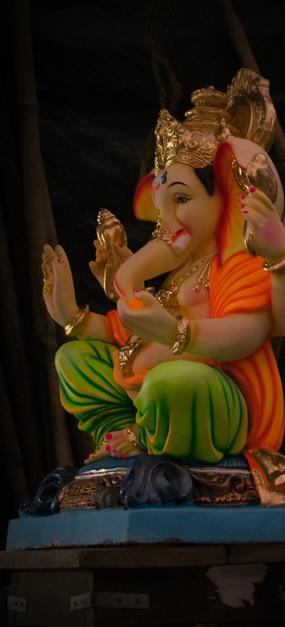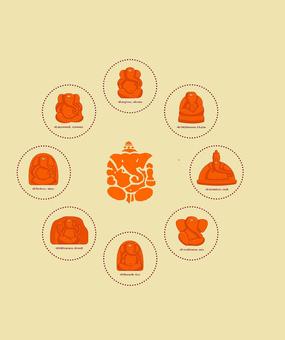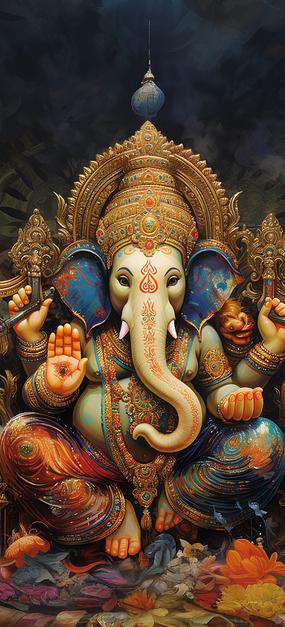Amazing facts about India
From sculptures of Lord Ganesha in Central America, Persia, Iran, Afghanistan, China, Japan, Thailand, Cambodia and many other South-East Asian islands – there is a wide footprint of Lord Ganesha, tracing back to 2,500 years ago at the very least.
A timeless journey where Lord Ganesha – a Hindu God – epitomized the universal concepts of knowledge, strength, and reverence.
Bharath Gyan, a passionate research initiative, is painstakingly dotting the pieces together, foraging amongst lost remnants to keep the glorious past alive and known. Here are some lesser-known facts:
A part of Aztec civilizations
Don’t be surprised when you spot images of Lord Ganesha and various Hindu Gods at the Guatemala Museum. Or if you realize that Ganesha idols were found from a quaint temple of Mexico City’s Diego Riviera. The state of Vera Cruz in Mexico and Venezuela’s Quiragua also revealed the bearings of Lord Ganesha. Excavations and manuscripts from Central America prove without a doubt – Lord Ganesha was worshipped in the Aztec culture. Interestingly, Lord Ganesh is shown wearing the loose garments of the Aztec civilizations in this part of the world.
Alexander Von Humbolt, a European anthropologist who lived between 1769-1859, was the first to postulate the Asiatic origin of the early American civilization. Over 150 years ago, he wrote that the Mexicans worshipped a human figure whose head resembled an elephant. A remarkable and non-accidental resemblance with the Hindu God, Lord Ganesha.

But elephants are not common in Central America. Mexican sculptures depict elephants in ceremonial grandeur – bearing a startling resemblance to the way Indian elephants were dressed for rituals and pomp. The prolific writer on mythology, religion and anthropology of many ancient civilizations, Donald Alexander Mackenzie (1873-1936) corroborated with an observation: the symbols of Mayan elephants had religious significance.
It is unfathomable how the Central Americans could have visualized the elephants correctly and have incorporated in their temple sculptures. Perhaps their contact with India and South East Asia had propelled this.
The connection between Lord Ganesh & Janus
Interestingly, there is a thread that connects Lord Ganesh to ancient Rome. That thread is a divinity called Janus hailing from the pre-Christian era.
Janus was prayer to make auspicious beginnings. Images of Janus were also installed on doorways as a guardian. Janus had two faces, one to look at the past and one to look at the future. Janus and Lord Ganesha, both, seem to be associated with two faces.

There are many fascinating similarities between Janus and Lord Ganesha, including the similarity between their phonetics. Janus is also a divinity associated with numbers. Any guesses why the first month of the calendar is named January?
The word Ganesha, has two components, Gana and Esha. Esha means ‘the lord of’. Gana stands for count, numbers, multitude. (Mathematics is called ganitham in India.) The name Ganesha denotes Him to be the lord of multitudes and numbers. The faculty needed to count, deal with multitudes, is knowledge, intellect. It is this intellect which can help man overcome obstacles as man’s obstacles primarily stem from his mind. For thousands of believers, Lord Ganesha is also known as Vignaharta – the remover of obstacles.
A trail of many forms & one belief
The worship of Lord Ganesha spread far and wide, while the local traditions of each region determined the form and name of Lord Ganesha. If Lord Ganesha is showns wearing Zoroastrian robes in Iran, he could carry a plant in his hands in Thailand. He is called the noble child or Pillaiyar in South India and Sri Lanka, while the Tibetans call him Ts’ogsbdag.
The Cambodians adopted him as Prah Kenes, the Mongolians call him Totkharour Khagan while he is known as Vinayaksa or Sho-ten in Japan.
The garb and name, notwithstanding, Lord Ganesha is a universal symbol of auspiciousness, good fortune and happiness.
A few fascinating facts:
Indonesia: The currency, the Rupiah note of Indonesia too, has an image of Lord Ganesha, depicting him as a divinity for numbers and knowledge.

Cambodia: When the French archeologist Henri Mahout discovered Angkor Vat, a pantheon of Hindu Gods were unearthed. Lord Shiva, Lord Vishnu, Lord Ganesha are consecrated in the ancient temple complex, built by generations of Hindu kings.
Java: Borabudur temple compounds are famous for their magnificent temples, including a set of Hindu temples – Candi Sukuh and Candi Ceto. The Sanjaya Hindu kings built the Candi Loro Jongrang-Prambanan, dedicated to Lord Ganesh, Lord Shiva and Durga Mahishasuramardini. East Java’s Tuliskaiyo village has an ancient three-meter statue of Lord Ganesha.
Japan: The origins of the Japanese deity, ‘Kangiten’, lie with Lord Ganesha. This deity is prayed to for strong conjugal bonds, affection and for happiness. There are around 250 temples of Lord Ganesha in Japan.
 Burma: The terrace corners of Shwesandaw pagoda were adorned with Lord Ganesh’s statues, giving it a local name of Ganesh pagoda or Maha Peinne pagoda. (Maha Peinne is the Burmese name for Lord Ganesha.) Several Hindu deities were worshipped in Bagan before the arrival of Buddhism.
Burma: The terrace corners of Shwesandaw pagoda were adorned with Lord Ganesh’s statues, giving it a local name of Ganesh pagoda or Maha Peinne pagoda. (Maha Peinne is the Burmese name for Lord Ganesha.) Several Hindu deities were worshipped in Bagan before the arrival of Buddhism.
North China: Excavations unearthed a statue of Lord Ganesh from AD 531.
True to his name, Lord Ganesha is, indeed, a deity adored by multitudes around the world
To borrow a few lines from Adi Shankaracharya’s timeless composition on Lord Ganesha:
Gunaateetamaadyam chidaanandaroopam Chidaa-bhaasakam sarvagam jnanagamyam Munidhyeyamaakaasharoopam paresham Parabrahmaroopam Ganesham bhajema
We worship the one beyond the Gunas, the embodiment of bliss consciousness,the light of consciousness, the all-pervading, who is the source, course, and goal of knowledge, whom the sages meditate upon, who is formless as Ākāsha, the highest Lord Shri Ganesha, the Supreme Brahman personified.
The material has been sourced from @bharathgyan. This research team, led by a passionate husband-wife duo – Dr. DK Hari and Dr. Hema Hari, unearth some of India’s untold stories and make them contemporary. You can click here to buy any of their books on Indian civilization.














